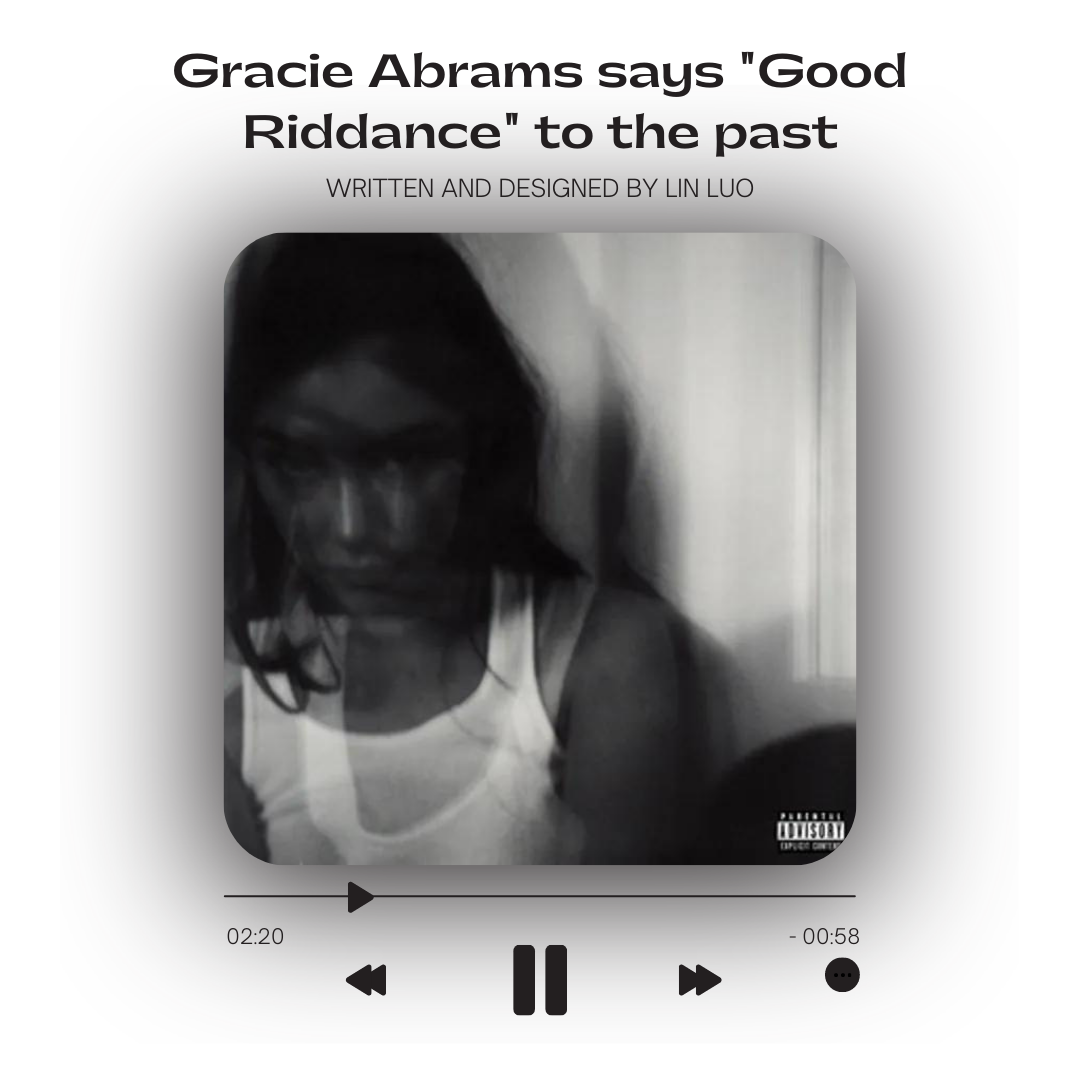
Having made herself a known presence in the pop music sphere since 2019, singer-songwriter Gracie Abrams’ debut album, “Good Riddance,” proves her a force to be reckoned with and transgresses the mark of the typical “sad-girl” artist that she has been categorized as since the release of her 2020 EP “minor.” Despite having amassed over 200 million streams and inspiring her soft-pop sister Olivia Rodrigo’s smash hit “driver’s license,” Abrams’ simplicity in production and lyrics holds itself back from rising above the cliches of heartbreak.
Imbued with producer Aaron Dessner’s soft sad girl-pop magic touch – the same found in Taylor Swift’s “Folklore” and “Evermore,” who Abrams is supporting on the upcoming “Eras Tour” – “Good Riddance” has a similar conceptual idea to her past projects of following the fall of a romantic relationship, but it dives much deeper into its crashing and burning. What makes “Good Riddance” stand out is the reflection and personal accountability throughout the album – a seemingly rare take in the current young-female pop space where playing the victim against an ex’s past transgressions is oftentimes the musical norm.
This idea is shown right at the album’s opener, “Best,” in which Abrams confesses, “used to lie to your face/twenty times in a day/it was my little strange addiction.” “I know it won’t work” and “Full machine” are also masterful displays of Abrams’ self-awareness in her misgivings of the relationship; simplistic metaphors like “‘cause I’m your ghost right now/your house is haunted” and “I’m a forest fire/you’re the kerosene” still hold an emotional impact from the soaring production of the heartbeat-like bass and delicate instrumentals.
The album’s lead single “Where do we go now” reflects on the multitude of minuscule lies that Abrams had told over the course of the relationship, building up to the beautifully regretful bridge in which she admits, “now I’m half of myself here without you/you’re the best in my life and I lost you,” ending with the mesmerizing repetition of Abrams asking, “Where do we go now?” capturing the desperation and the illusion of weakness felt in knowing the right answer, but also wanting to cling to the love that might still exist.
It should be no surprise that Abrams is such a master of storytelling – she’s the daughter of Star Wars’ J.J Abrams. Her lyrics spill into the listener’s ears like water, overflowing as she increasingly opens up and exposes her deepest vulnerabilities.
Other standouts include the single “Amelie,” a track that takes a bit of a conceptual detour. Playing as a character study of a dream-like, titular figure, Abrams struggles to search for Amelie after having an impactful interaction with her. “This is what the drugs are for” features some of the tensest vocals in the album, overlayed with a hint of an acoustic guitar country twang.
Abrams’ signature, whisper-like vocals tie the album together, with the frequent voice breaks giving songs the edge of having just cried her guts out and subsequently picking up the mic. But despite featuring gorgeous vocals and instrumentals, “Good Riddance” falls victim to a frequent flaw in Abrams’ work: songs blending together. If one were to not pay attention to the changes in tracks, they could easily mistake one song for another, lacking a particular distinctiveness in every song.
“Good Riddance” proves itself to be an intimate portrait of growth at the cost of heartbreak, radiantly displaying the newfound maturity that comes with growing into one’s early 20s.